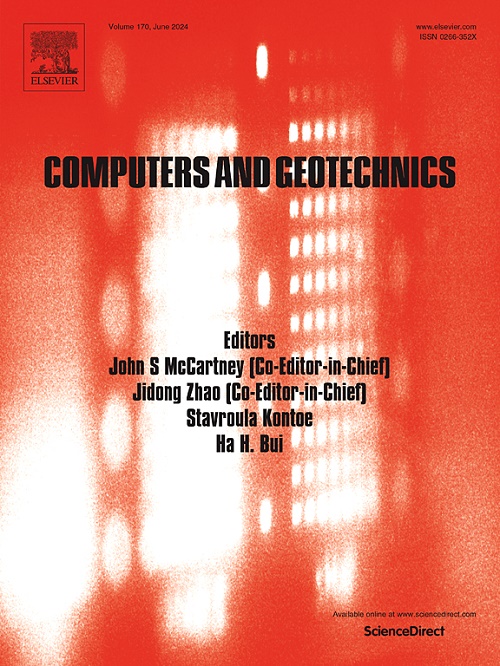Numerical evaluation of the dynamic performance of recommissioned offshore wind turbines under service life extension and repowering strategies
IF 6.2
1区 工程技术
Q1 COMPUTER SCIENCE, INTERDISCIPLINARY APPLICATIONS
引用次数: 0
Abstract
This study addresses the recommissioning needs of offshore wind farms facing foundation degradation and equipment aging after years of operation. Service Life Extension (SLE) and Repowering, as key strategies to reduce decommissioning costs and enhance asset value, have been successfully applied to multiple wind farms. Based on advanced 3D finite element (FE) simulations, this study systematically analyzes the dynamic response of sand-monopile-offshore wind turbine (OWT) system under long-term service and scour effects, focusing on the impact of recommissioning strategies, including upper structure replacement (Repowering) and cement-solidified soil foundation remediation (SLE). The analysis reveals that long-term service and scour effects significantly reduce the natural frequency of OWTs, increasing the risk of resonance and exacerbating the dynamic response and deformation of the tower. Replacing the upper structure with a lower-power OWT can effectively enhance the tower’s resistance to deformation but may lead to increased dynamic response at the nacelle. When replacing with a higher-power OWT, cement- solidified soil remediation significantly restores the turbine’s service performance by suppressing displacement and strain accumulation in shallow soils, though its effectiveness diminishes as the remediation height increases. These findings provide valuable insights for selecting and evaluating recommissioning strategies for OWTs.
延长使用寿命和再动力策略下海上风力发电机组动态性能的数值评估
本研究解决了海上风电场在运行多年后面临地基退化和设备老化的重新调试需求。延长使用寿命(SLE)和重新供电作为降低退役成本和提高资产价值的关键策略,已成功应用于多个风电场。基于先进的三维有限元模拟技术,系统分析了砂-单桩-海上风电机组(OWT)系统在长期运行和冲刷作用下的动力响应,重点研究了上部结构更换(Repowering)和水泥固化地基修复(SLE)等再调试策略对系统的影响。分析表明,长期服役和冲刷作用显著降低了水轮机的固有频率,增加了水轮机的共振风险,加剧了水轮机的动力响应和变形。用功率较低的OWT代替上部结构可以有效地提高塔的抗变形能力,但可能会导致吊舱处的动力响应增加。当更换功率更高的OWT时,水泥固化土壤修复通过抑制浅层土壤的位移和应变积累,显著恢复了水轮机的使用性能,但其有效性随着修复高度的增加而降低。这些发现为owt重新调试策略的选择和评估提供了有价值的见解。
本文章由计算机程序翻译,如有差异,请以英文原文为准。
求助全文
约1分钟内获得全文
求助全文
来源期刊

Computers and Geotechnics
地学-地球科学综合
CiteScore
9.10
自引率
15.10%
发文量
438
审稿时长
45 days
期刊介绍:
The use of computers is firmly established in geotechnical engineering and continues to grow rapidly in both engineering practice and academe. The development of advanced numerical techniques and constitutive modeling, in conjunction with rapid developments in computer hardware, enables problems to be tackled that were unthinkable even a few years ago. Computers and Geotechnics provides an up-to-date reference for engineers and researchers engaged in computer aided analysis and research in geotechnical engineering. The journal is intended for an expeditious dissemination of advanced computer applications across a broad range of geotechnical topics. Contributions on advances in numerical algorithms, computer implementation of new constitutive models and probabilistic methods are especially encouraged.
 求助内容:
求助内容: 应助结果提醒方式:
应助结果提醒方式:


